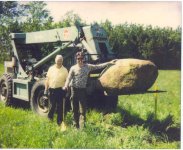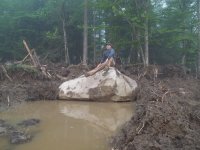Industrial Toys
Super Star Member
- Joined
- Feb 25, 2008
- Messages
- 17,407
- Location
- Ontario Canada
- Tractor
- Kubota R510 Wheel Loader + Cab and backhoe, JD 6200 Open Station, Cushman 6150, 4x4, ten foot 56 hp Kubota diesel hydraulic wing mower, Steiner 430 Diesel Max, Kawasaki Diesel Mule, JD 4x2 Electric Gator
It wasn't the lack of TV. They didn't have cell phones!
But, I can see the motivation for clearing. You start with a little plot that maybe feeds your family. And then a little more and a little more. It must have been most satisfying and there was probably some sense of competition as well.
Often the government stipulated that you had to have so much land cleared in a given time frame, and a house built to keep your land claim.
But, I can see the motivation for clearing. You start with a little plot that maybe feeds your family. And then a little more and a little more. It must have been most satisfying and there was probably some sense of competition as well.
Often the government stipulated that you had to have so much land cleared in a given time frame, and a house built to keep your land claim.


